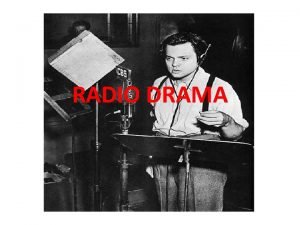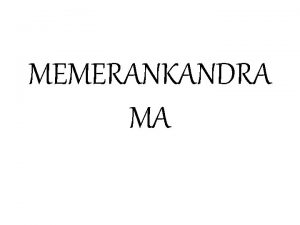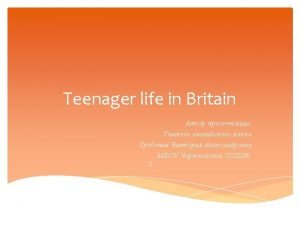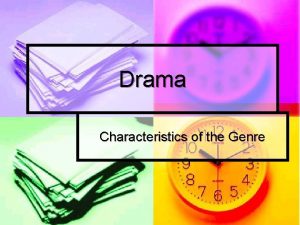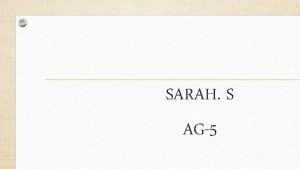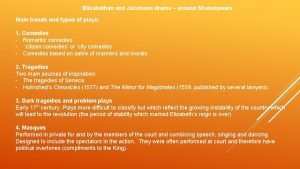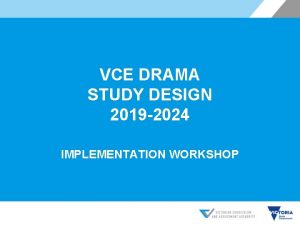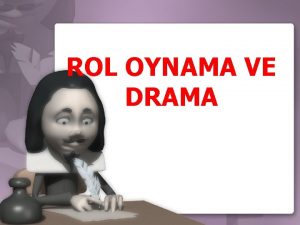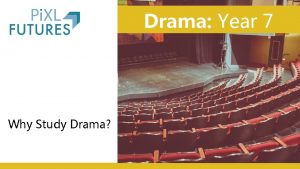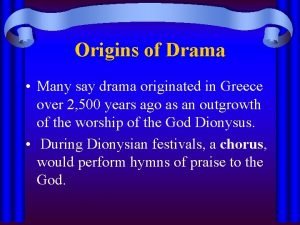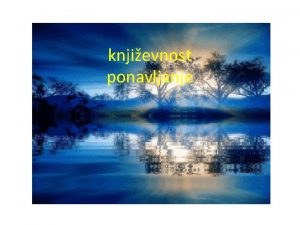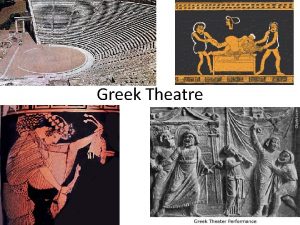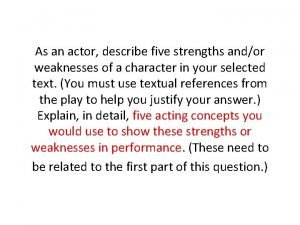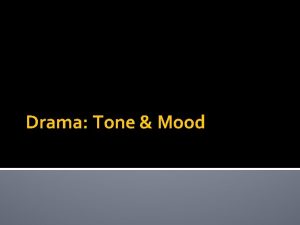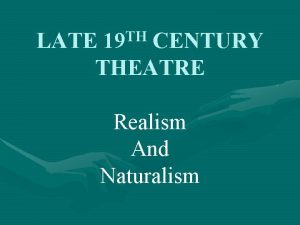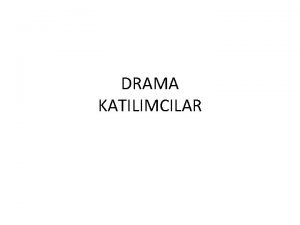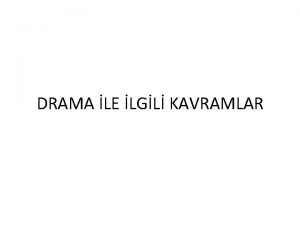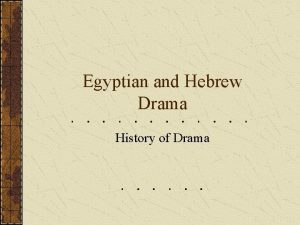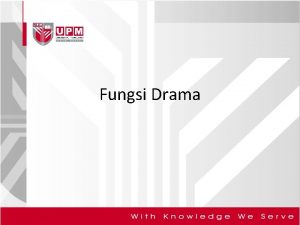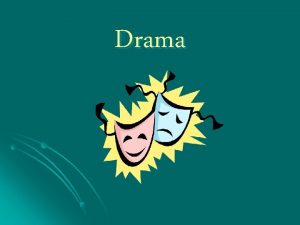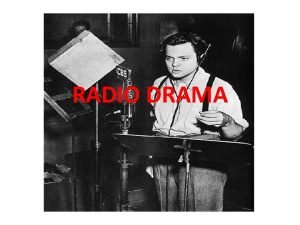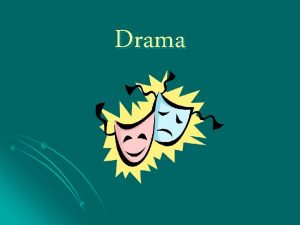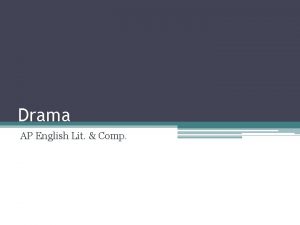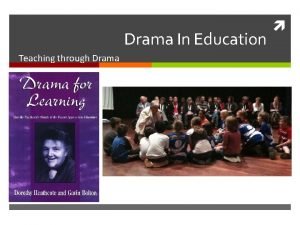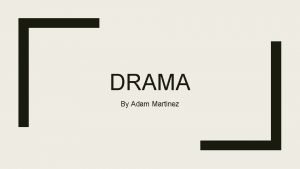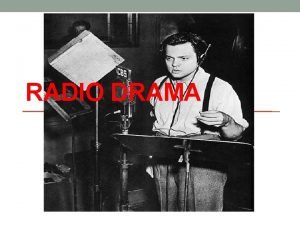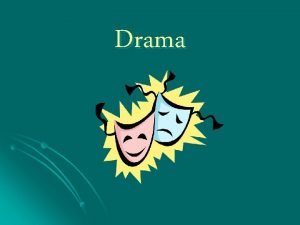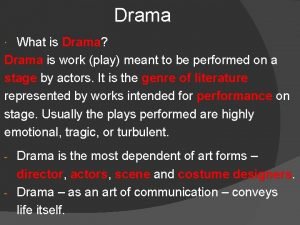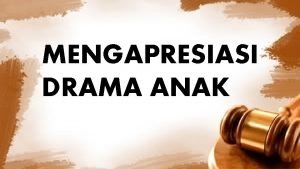Drama What Is Drama A drama is a





















- Slides: 21

Drama

What Is Drama? A drama is a story enacted onstage for a live audience.

What Is Drama? l Origins of Drama l The word drama comes from the Greek verb dran, which means “to do. ” l The earliest known plays. . . l were written around the fifth century B. C. l produced for festivals to honor Dionysus, the god of wine and fertility

Dramatic Structure Like the plot of a story, the plot of a play involves characters who face a problem or conflict. Complications tension builds Exposition characters and conflict are introduced Climax point of highest tension; action determines how the conflict will be resolved Resolution conflict is resolved; play ends

Dramatic Structure Conflict is a struggle or clash between opposing characters or forces. A conflict may develop. . . q between characters who want different things or the same thing q between a character and his or her circumstances q within a character who is torn by competing desires

Tragedy A tragedy is a play that ends unhappily. • Most classic Greek tragedies deal with serious, universal themes such as right and wrong justice and injustice life and death • Tragedies pit human limitations against the larger forces of destiny.

Tragedy The protagonist of most classical tragedies is a tragic hero. This hero • is noble and in many ways admirable • has a tragic flaw, a personal failing that leads to a tragic end pride rebelliousness jealousy

Comedy A comedy is a play that ends happily. The plot usually centers on a romantic conflict. boy meets girl boy loses girl boy wins girl

Comedy • Comic complications always occur before the conflict is resolved. • In most cases, the play ends with a wedding.

Modern Drama A modern play • may be tragedy, comedy, or a mixture of the two • usually focuses on personal issues • usually is about ordinary people

Modern Drama Modern playwrights often experiment with unconventional plot structures. long flashbacks visual projections of a character’s private thoughts music

Performance of a Play When you read a play, remember that it is meant to be performed for an audience. Stage Directions Playwright describes setting and characters’ actions and manner. [Wyona is sitting on the couch. She sees Paul and jumps to her feet. ] Wyona. [Angrily. ] What do you want? Performance l Theater artists bring the playwright’s vision to life on the stage. l The audience responds to the play and shares the experience.

Performance of a Play § Theater artists include § Actors § Directors § Lighting technicians § Stage crew

Setting the Stages can have many different sizes and layouts. “Thrust” stage • The stage extends into the viewing area. • The audience surrounds the stage on three sides.

Setting the Stages in Shakespeare’s time were thrust stages.

Setting the Stage Scene design or scenery transforms a bare stage into the world of the play. Scene design consists of • sets • lighting • costumes • props

Setting the Stage A lighting director skillfully uses light to change the mood and appearance of the set. A blackout is a term for suddenly having all of the stage lights go off at the same time.

Setting the Stage The costume director works with the director to design the actors’ costumes. • Like sets, costumes can be detailed minimal

Setting the Stage Props (short for properties) are items that the characters carry or handle onstage. • The person in charge of props must make sure that the right props are available to the actors at the right moments.

The Characters The characters’ speech may take any of the following forms. Dialogue: conversations of characters onstage Monologue: long speech given by one character to others Soliloquy: speech by a character alone onstage to himself or herself or to the audience Asides: remarks made to the audience or to one character; the other characters onstage do not hear an aside • Diction is when a character speaks clearly so the audience can understand. • Projection is when a character speaks loudly so the audience can hear.

The Audience Finally, a play needs an audience to experience the performance understand the story respond to the characters
 Drama türleri
Drama türleri Define radio drama
Define radio drama Bahasa yunani kuno drama adalah
Bahasa yunani kuno drama adalah Dramaserial.tv semi
Dramaserial.tv semi What did greek actors wear
What did greek actors wear Drama genre history
Drama genre history Types of drama
Types of drama Elizabethan and jacobean drama
Elizabethan and jacobean drama What liturgical drama uses allegory to relay its stories
What liturgical drama uses allegory to relay its stories Vcaa drama study design
Vcaa drama study design Terminology of drama
Terminology of drama Rekwisiete in drama
Rekwisiete in drama Rol oynama ile drama arasındaki fark
Rol oynama ile drama arasındaki fark Sujetovost
Sujetovost Drama
Drama Where drama originated
Where drama originated Elizabethan drama introduction
Elizabethan drama introduction Vinograd pjesma
Vinograd pjesma First instrument
First instrument Strengths and weaknesses of an actor
Strengths and weaknesses of an actor What is tone in drama
What is tone in drama Naturalism in acting
Naturalism in acting

